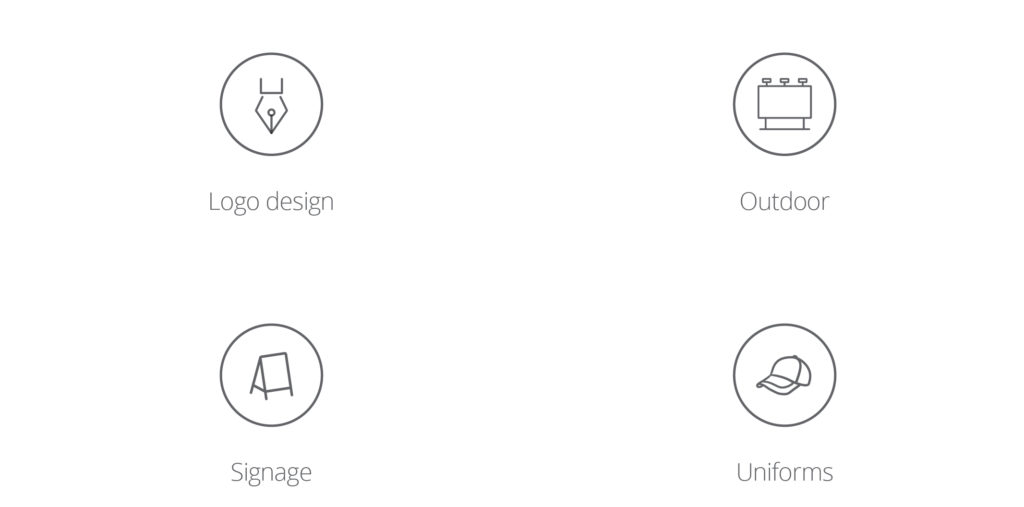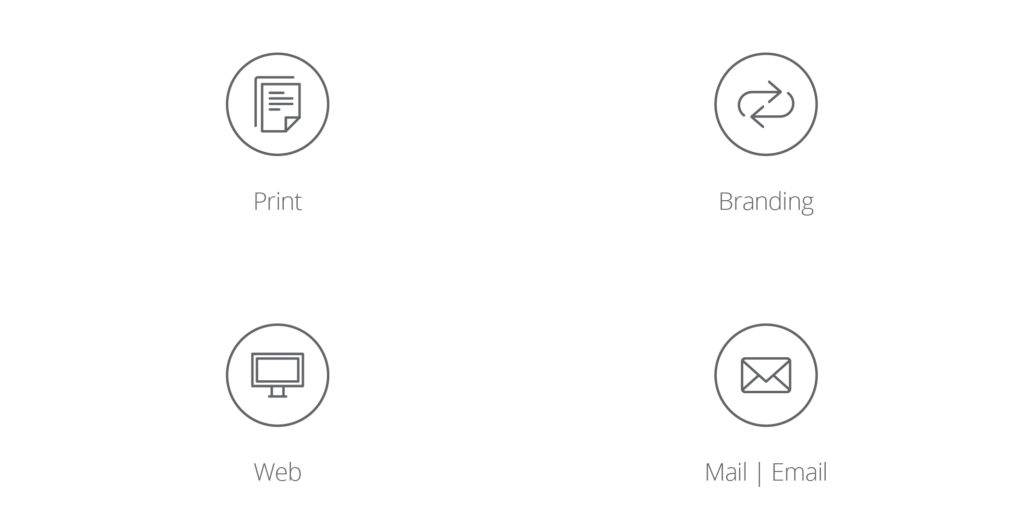Author: Whyfor Admin
Three Things We Know About Marketing for the Construction Industry


At WHYFOR, we’ve been guiding clients through strategic, insight-driven marketing plans for more than a decade. Over that time, we’ve worked across a number of different industries, from real estate to wellness to tech to advocacy and construction. And within each one, we’ve learned a few truths along the way — because while every business faces the same six challenges, those challenges can include critically important nuances based on the industry.
Right now, experts have noted that the construction industry is facing challenges related to:
- Project delays
- A shortage of skilled workers
- Access to supplies and materials
When it comes to the construction industry and the clients we’ve worked with, we’ve seen recurring marketing themes that need to be consistently addressed. They’re that important.
- Relationships need nurturing. It’s important for those in the construction industry, which spans a large spectrum of services, to consistently nurture their relationships — internally and externally. We’re talking about clients, vendors, subs and employees. It’s those relationships that could potentially impact revenue, as leads come in and bids are requested for projects. Personal recommendations, for example, improve conversion rates by 5.5 times. And if those relationships lead to new opportunities, it’s easy to see the connection between relationships and revenue. By understanding and appreciating the relationships within the industry ecosystem, construction companies can maintain a solid standing among competitors who pay less attention to those details.
- Reputation matters. A construction company’s reputation could be its lifeline in a close-knit industry. Word travels fast, and negative ones travel the fastest, creating the potential for a company’s reputation to impact its relationships, which would ultimately trickle down to impacting revenue. It’s why the work that a construction company does, establishing its reputation in the industry, is so important to its success. Reputation can be managed effectively in a number of ways, from PR to digital community management, but it starts with the actual work — which means reputation needs to be managed first from within, among employees, before it ever becomes an issue externally.
- Recruitment is vital to sustainability. Without the right people, a construction company can’t do the work it needs to do, especially in an industry that is experiencing rapid growth and consistent labor shortages — according to data from the Bureau of Labor Statistics. And, without the right people, construction companies can’t do the work the way they need to do it to maintain its reputation and its relationships. It’s why recruitment is quite possibly the most important ingredient for sustainability, especially in an industry with 830,000 players, according to statistics. By having a clear understanding of internal needs, streamlining internal processes and targeting the right people with employment opportunities, construction companies have a much better chance at onboarding the type of people who match their culture, share their same vision and understand their importance to the overall success of the business. And when it’s done right, recruitment has the potential to positively impact relationships and reputation — the other two critical keys to success for construction companies.
There is no secret formula to marketing for construction companies, but there is nothing lost in putting focused energy into any of these three areas. Interested in learning more? Request a case study on one of our construction clients. We’d be happy to share with you what we did for them and how those results elevated their level of success.
Three Things We Know About Real Estate Marketing


Anyone with a pulse will know that the real estate market is hot, white hot, at the moment. Trending topics include discussions about whether or not a bubble exists and if it will burst while potential buyers are offering everything short of their first born to secure a home among a field of bidders.
In addition, industry experts at Realtor Magazine and CRE are pointing to a list of potential challenges facing the market, including:
- Inventory
- Labor shortages
- Financing
- Rising interest rates
- Remote work
- Affordable housing
At WHYFOR, we get it. When it comes to real estate, every player is challenged to rise above and stand out in a highly competitive space. It can be daunting. But, our real estate experience has shown us a few things about the importance of using insights and integration to influence behavior.
Here are three things we know about real estate.
- Understand your personas: It’s important to know who you’re talking to. Are they a young couple looking for a larger home to accommodate a growing family? Is it a newly-single parent looking for a fresh space to call their own? Or, are the owners older, hoping to downsize but still have room to entertain at the holidays? Personas dial in audiences with precision. Understanding them helps brands shape the content, particularly voice and substance, of what they’ll share with each individual persona. And there are so many different ways to understand an audience, from income level to timing to geography to passions. An outdoorsy persona likely wouldn’t be interested in high-rise living, for example. And the same could be said in reverse. It’s that in-depth understanding that makes marketing more powerful and more effective.
- Understand where they are on their journey: Once you understand who your brand personas are, it’s important to understand where they are. A couple nearing retirement may still be a few years away from purchasing a second home, or they could be ready to pull the trigger on a purchase immediately. The details in the circumstances map out how a brand should market to a potential client — from voice and tone, to opportunities to buy to the all-important “call to action” statement. Those same variables can be applied to any type of marketing, from digital ads to blogs to email campaigns. Understanding the point along the journey also helps with user experience elements, from digital ads to landing pages to website development.
- Understand the pain points each persona is experiencing and what questions they may have: Personas are actually mosaic individuals, if that paints a picture of the character traits that are poured into each one. Knowing that, it’s safe to say that a number of different but potentially related pain points could bubble to the surface, with a similar volume of purchase-related questions. When it comes to real estate, consider questions related to:
- Cost and timing
- Location
- Customization
- Amenities and aesthetics
- But also consider what, specifically, they may be searching for:
- Resale
- Custom estate
- Condo
- First or second home
- Land that could be developed at a later date
By addressing personas with an informed perspective, it builds a stronger relationship and more trust between the prospect and the brand — lending the brand greater influence on the prospect.
Want to see more? Our case studies bring these truths to life.
Give Retention Front-Seat Attention


Everyone is familiar with a house of cards. And if not, they’re familiar with Jenga, either from childhood or from the play area at your favorite bar.
Both things capture the same theory — that a missing card or a misaligned wooden brick could turn a solid structure into a fragile one and send it tumbling to pieces. The same can be said for business.
And that’s the idea behind H.A.L.O., the proprietary business system developed by WHYFOR’s founder and used to assess and find solutions for one or more of the six challenges every business faces. Because every business, regardless of industry, faces the same universal challenges.
We’ve talked about how relationships can impact reputation and how reputation can impact recruitment. See? Jenga. One loose brick, or one challenge in one area of a business, can hamstring other departments or initiatives.
And sometimes it happens without anyone ever even realizing it. Because not all of the six challenges, the ones we refer to as the six Rs, have the same voice. They don’t all get paid the same level of attention. Some stay in the background, making it easier to overlook their impact.
One example is retention, the last of the six Rs in our H.A.L.O. series. Retention, as in employee retention and client retention — both of which are pretty critical to successful business operations.
For both scenarios, why would a business struggle with retention? Greener pastures, or at least the perception of it, could be one reason. And what’s in those pastures?
From an employee perspective, likely more money, better benefits, better alignment with values, more convenience or more inner fulfillment. From a client perspective, it could include spending less and getting more, better results, improved service and better alignment on values.
Either way, revenue growth depends on retention. Current labor statistics indicate it is a worker’s market with a record-breaking 10.1 million job openings in the U.S. as of the end of July, according to Forbes. And competition for business has never wavered as those seeking service are perpetually interested in receiving the most for the lowest cost possible.
So it’s fair to say that those who cannot retain employees will have a difficult time retaining clients, too. And if retention is a challenge, it’s very possible that reputation will suffer, which will undoubtedly impact revenue.
That was the sound of several cards falling after just one was pulled from its position.
But there are solutions for retention challenges and the H.A.L.O. business system bakes them right in. It begins with understanding why retention is a challenge and then determining how to adjust to improve the situation.
It may mean improved communication or an adjustment of roles or it may involve switching health insurance providers. The point is, everything is unknown until the work is done to dig in and expose the sore spots. And the same goes for client relationships.
H.A.L.O. helps with both. To learn more about our H.A.L.O. business system, download our one-sheet.
GO Car Wash

Client Background
GO Car Wash, a growth-minded, drive-thru car wash experience, began small — with locations in Kansas and Missouri — and expanded by adding locations in Nevada and Texas. By assuming ownership of an already operational car wash, GO Car Wash simply needed to rebrand and establish its own presence in the market and carry that through to each new location.
The Challenge
GO Car Wash, operating in a quick-serve industry that offers minimal customer interaction, needed to find a way to establish a memorable, friendly brand presence that stood out from its competitors and resonated with drivers who love their vehicles. That branding would need to be used across exterior signage, on its website, in any advertising and on employee uniforms.
The Tools
The Opportunity
Market research indicated an opportunity for playful messaging with a nostalgic feel, leaning on a theme of exploration told through an authentic, relatable voice.
The Creative Concept
After considering a brand refresh versus a full rebrand, GO Car Wash chose the look and feel of an entirely new concept, which relied on a retro color scheme courtesy the Gulf GT40 Livery, incorporated the feel and experience reminiscent of a pit crew and showcased a clean, vintage energy.


Recruitment: A Quiet Influencer


On the surface, recruiting appears to be a numbers game. There are countless statistics attached to workforce development, and let’s not forget an employer’s desire to cast a wide net to attract a large pool of candidates — forgetting momentarily that quality trumps quantity when it comes to filling vacancies.
But recruitment, a critical piece of WHYFOR’s H.A.L.O business system, should be viewed as more than a task that needs to be completed to fill a seat. Consider, for a moment, its ability to be an influencer. Less the Instagram influencer and more the influencer of success for other elements of a business.
We’re talking about revenue, relationships, reputation and retention. Yes, recruitment impacts all of those things — and probably more — which is why it deserves more attention, on a deeper level, than it receives.
Any HR professional knows the numbers.
- Every vacancy costs an employer $500 a day.
- Almost half of businesses say their best hires come from employee referrals.
- More than half of job candidates don’t receive any communication in the months after applying for a position.
- A staggering three-quarters of employers have said they hired the wrong person for a position.
- The average job opening receives 250 resumes.
- About 4 million Americans left their jobs in April of 2021 to pursue something better.
Even for someone who likes math, those are a lot of digits to digest. And, when you tack context on to them, it’s even more challenging to process all of it. But understanding the impact a company’s recruitment efforts have on revenue, relationships, reputation and retention is non-negotiable.
Take, for example, revenue. If a company’s approach to recruitment attracts the wrong people — people who aren’t fully qualified or aren’t talented enough to do the job as it needs to be done — revenue can suffer. If you look at how recruitment impacts retention, there’s a similar theme.
The wrong people won’t stay, which keeps a company on that workforce development merry-go-round indefinitely.
If a recruitment process is cumbersome, devoid of information or handled poorly, it can negatively impact a company’s reputation among job candidates and the market in general. And, once a reputation suffers, the trickle-down effect means relationships could be impacted in a negative way.
In short, poorly executed or haphazard recruitment initiatives could be a sore spot being overlooked by companies struggling to find success simply because recruitment has the ability to initiate a cascading, domino effect on most other aspects of a business. And as part of our immersive and holistic H.A.L.O. system, we ask the questions that get us to the root obstacle.
Most business leaders focus on revenue as an issue, but by understanding how every element of a company is intertwined, our approach very often discovers an alternate influencer for success.
Recruitment is just one of them.
Learn more about our H.A.L.O. business system, our process and how it may help diagnose and solve for recruitment issues, download our one-sheet.
Reputation Is The Invaluable Intangible


When it comes to people, character is often tied to reputation. Wise quotes are regularly offered that suggest the importance of worrying more about one’s character than one’s reputation — since reputation is developed through an outsider’s lens.
But when it comes to business, that lens is basically everything. A brand can’t afford to disregard the quality of its reputation by simply hoping its character will keep it afloat in the marketplace. Why?
Because brand reputation influences other factors for success, a tested theory we leverage as part of our proprietary H.A.L.O. business system. One look at cancel culture proves that. A brand can be here and then be gone, like that, based on an outsider’s view or experience — based purely on its reputation.
Which means, the quality of a brand’s reputation can impact revenue, relationships and recruitment. And no business leader wants any of those to suffer.
Reputation has been labeled by some as being more valuable than money, while others have noted how difficult it is to build it and how easy it is to obliterate it. Of course, when we at WHYFOR hear about the connection between character and reputation, we can’t help but think of what we refer to as brand anatomy.
That anatomy, a brand’s DNA, could be correlated to its character. And when it comes to marketing, understanding and developing brand anatomy is a critical first step to building a larger strategy for tackling any one of the six problems every business faces, including reputation.
And, to add urgency to the issue, time is of the essence as more people spend more time engaging directly with brands and businesses. According to Hootsuite, 875,000 new users around the world begin using the internet every day. On average, users spend about seven hours online daily. And HubSpot reports 5.6 billion searches are conducted on Google every day.
Those numbers don’t simply illustrate online volume, they illustrate potential — for engagement, for search, for visibility, for share of voice and for reputation issues to improve or worsen, depending on a brand’s strategy to manage it.
This is where H.A.L.O., with its holistic approach, proves itself incredibly valuable. With a thorough analysis of a brand’s anatomy and a panoramic view of a brand’s reputation challenges, strategies can be developed to elevate it by investing in tactics such as:
- Improving a social media presence
- Earning secondary endorsements through public relations efforts
- Ensuring a quality product
- Managing an improved customer experience
- Facilitating authentic, positive online reviews
And honestly, all of that just scratches the surface. With a good understanding of how a brand’s reputation can impact other elements of business success, it is imperative that our H.A.L.O. strategies trickle down and through any other operational arm of a business — from sales to operations and HR to frontline customer service.
Everything is connected. And when it comes to the fragility of brand reputation, particularly in this era, success depends on everything being buttoned up, tight.
Learn more about our H.A.L.O. business system, and the process we use, by downloading our one-sheet.
Sr. Strategist

Welcome to the last job ad you’ll ever have to read! Ok, that may be an overstatement, but seriously, we’re excited you’re here and we hope you’re the perfect fit for our Sr. Strategist role here at WHYFOR.
From digital marketing to content, research to reporting, our strategy team covers it all. You’ll work closely with our Director of Strategy and team of content strategists, SEOs, paid media specialists and designers to ensure our clients have solid 30K-foot strategies that can be actualized at 15K-feet and executed at 0 feet.
None of us are experts at EVERY piece of digital marketing — but in this role, you need to understand the value of all the pieces coming together and know how to weave them into strategies and tactical plans that drive performance for clients. And if you like things boring, this isn’t the gig for you. As our Sr. Strategist you’ll be facilitating client workshops, conducting research, developing personas, building customer journey maps, planning content calendars, working across departments to compile compelling reports — all while contributing to exciting agency growth and carving out a long-term career development path.
It goes without saying (even though we’re about to say it) that you need to be an excellent communicator, both written and verbal, a stellar writer and a critical thinker. This isn’t a color-by-numbers role — proactivity and flexibility are critical.
Sound like you? Good! Check out more details below:
Front-end Developer

Thanks for taking a look at our job ad! We don’t want to waste your time, so let’s dive in. Our WHYFOR team is looking for a part-time developer with a keen eye for design. As our resident front-end developer, you’ll be responsible for ensuring the alignment of web design and user experience requirements, optimizing web pages for maximum efficiency, and maintaining brand consistency across all web pages. And as you probably know, the digital marketing world always throws new and exciting work our way, so there will be plenty of opportunities to roll up your sleeves and join a host of other rewarding projects for our clients.
You’ll need to know the ins-and-outs of working with back-end developers, graphic designers, UX specialists, CRO strategists and content creators/strategists to ensure all elements of web creation are consistent. This requires excellent communication and interpersonal skills (especially since most of our interactions are still Zoom/web-based).
Still interested? Check out some more details below:








